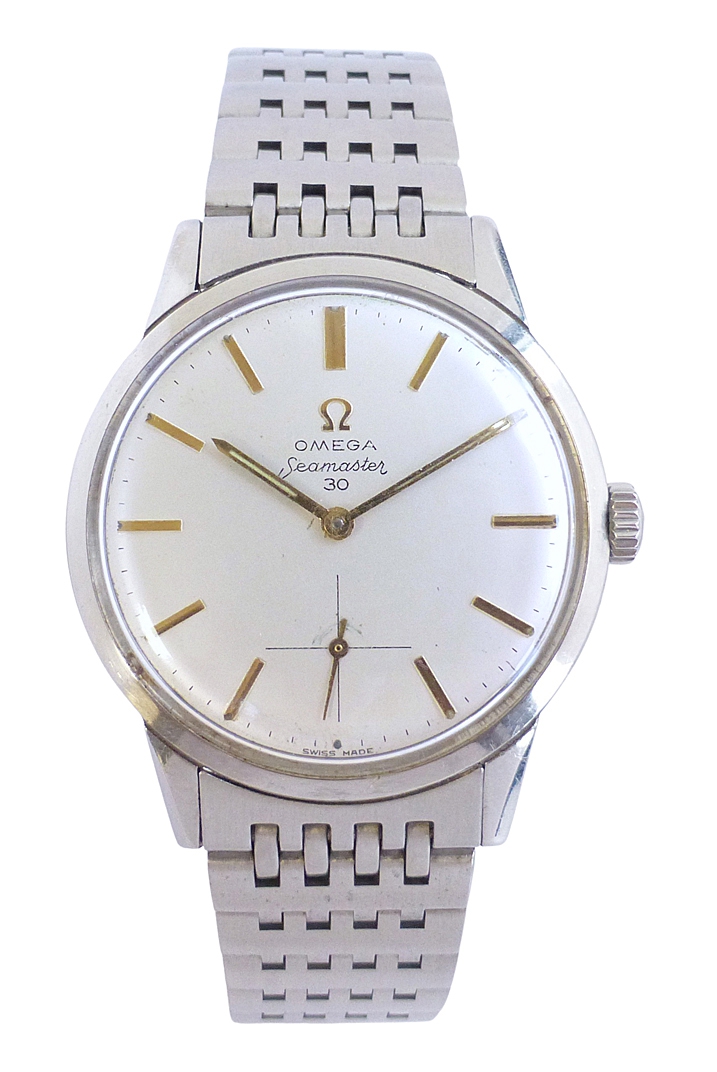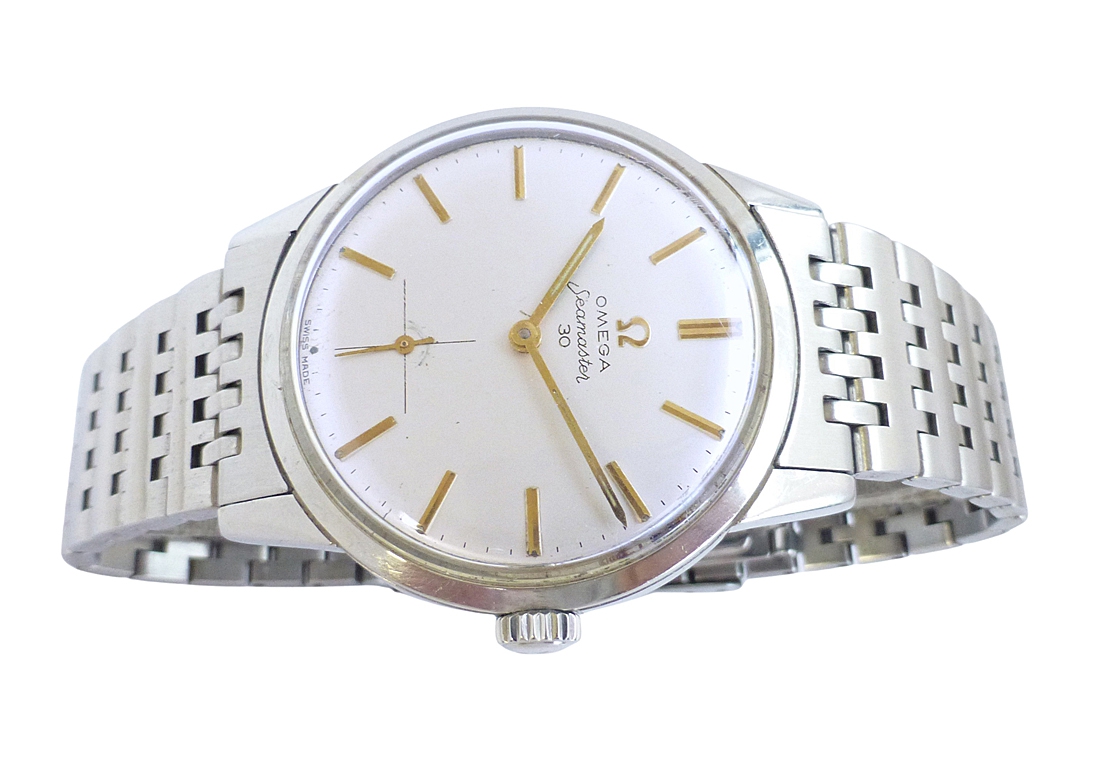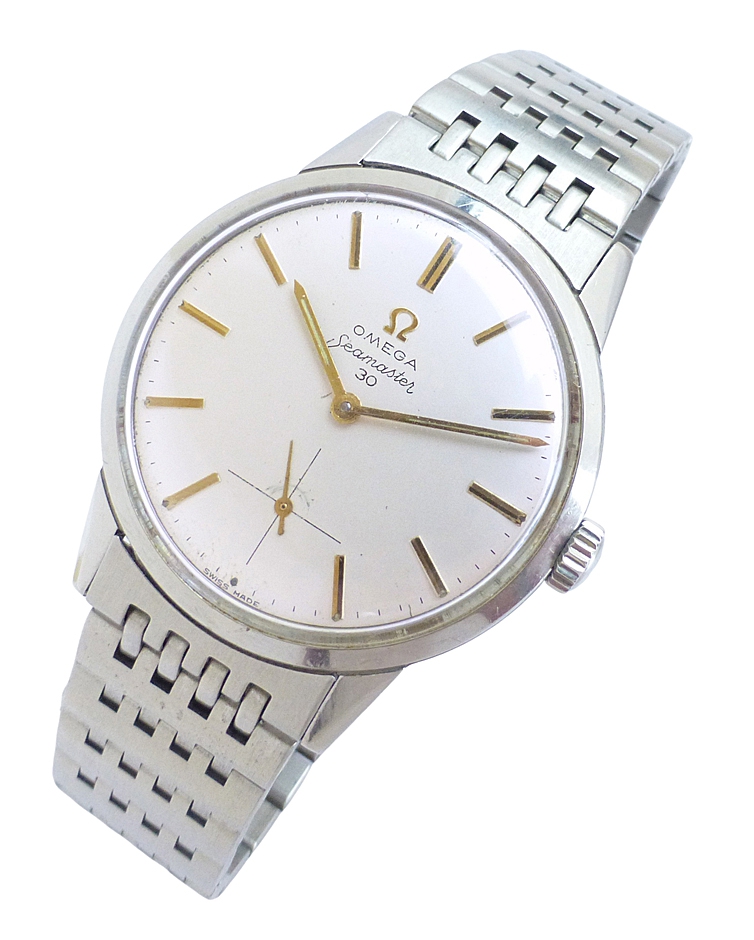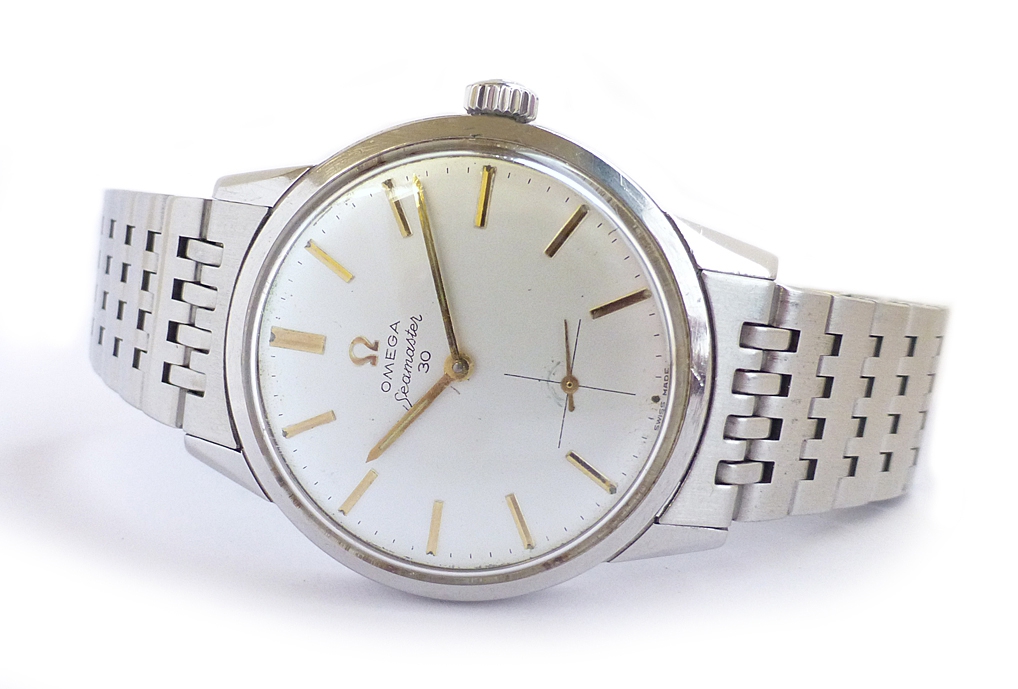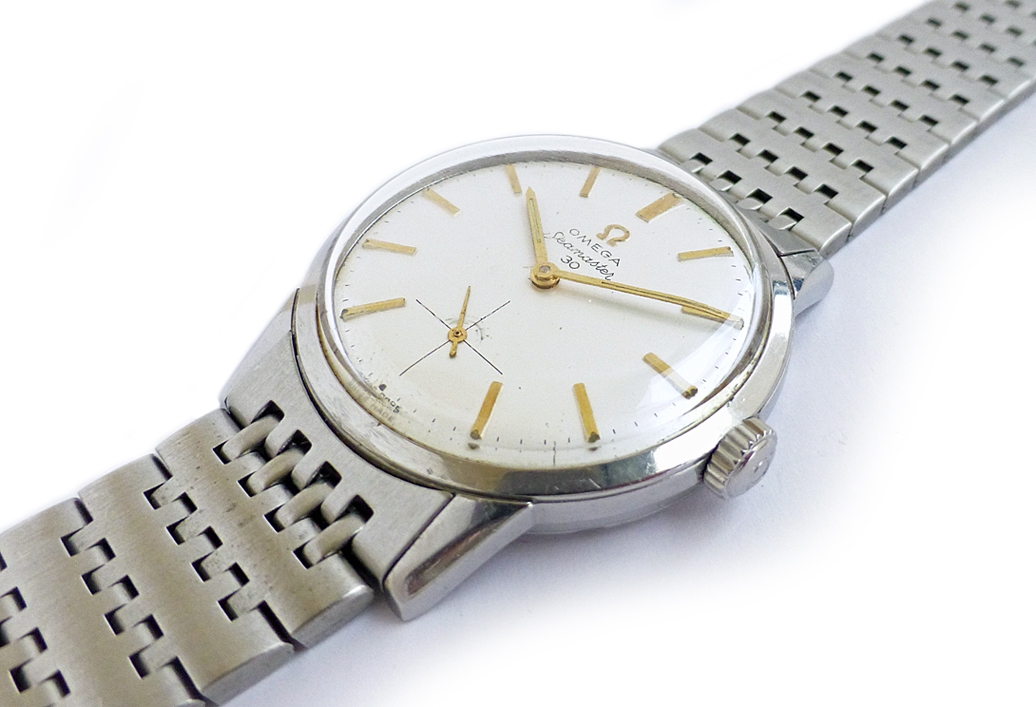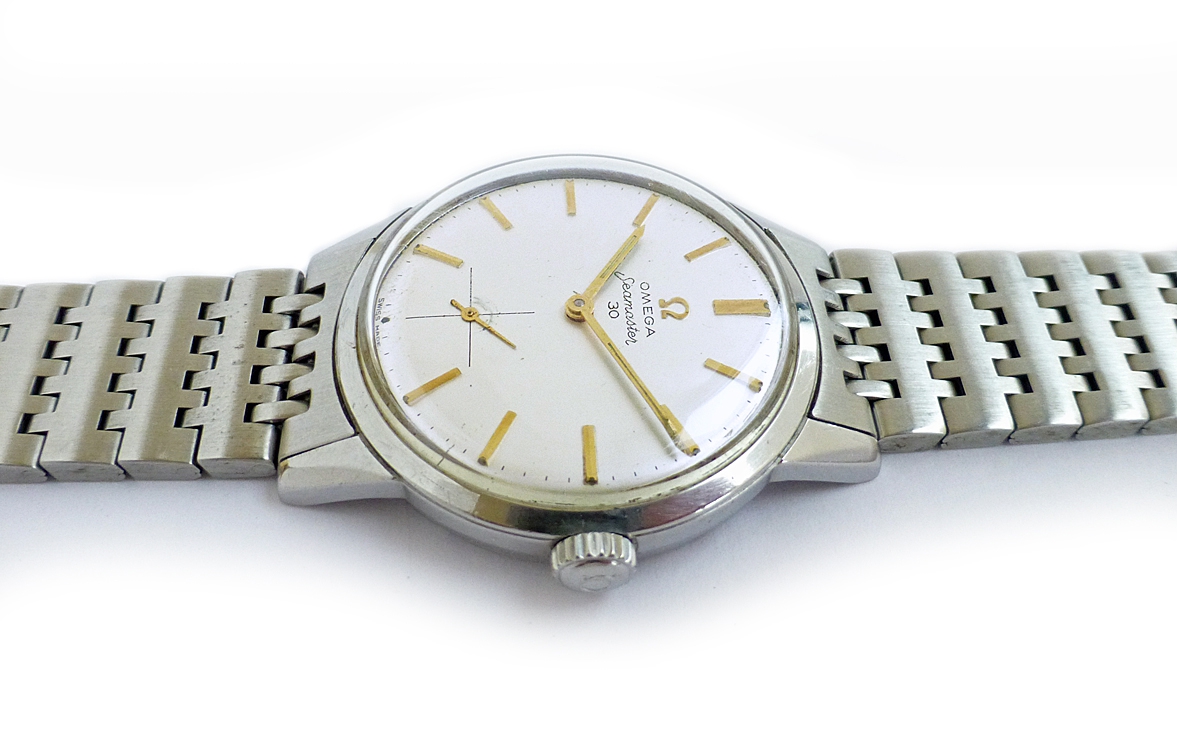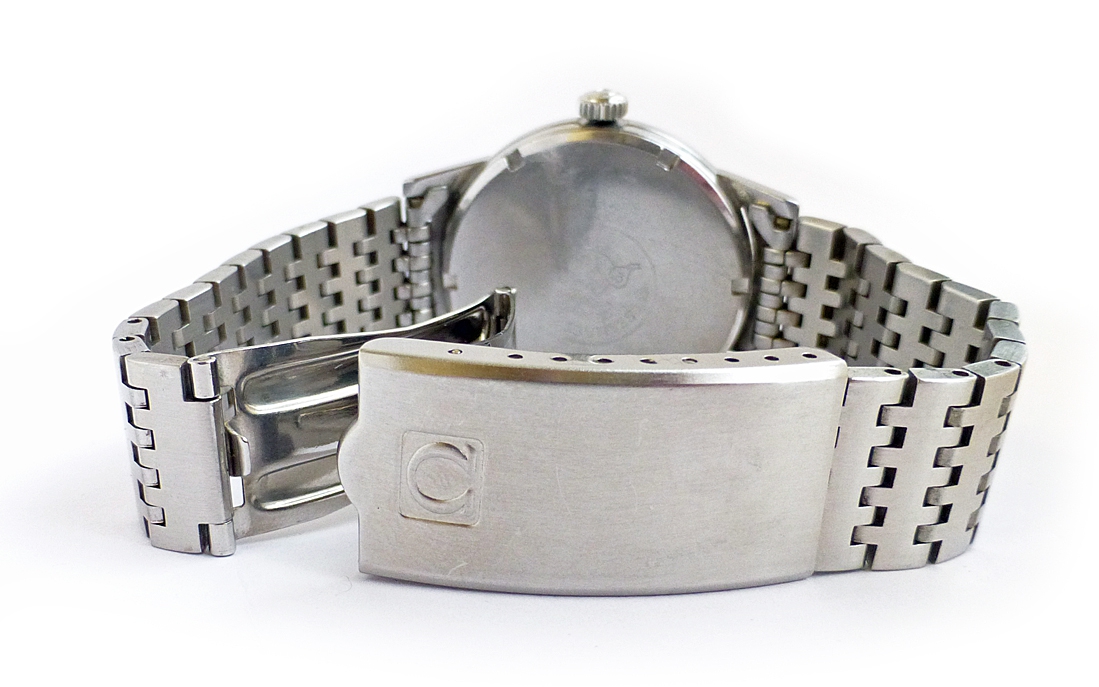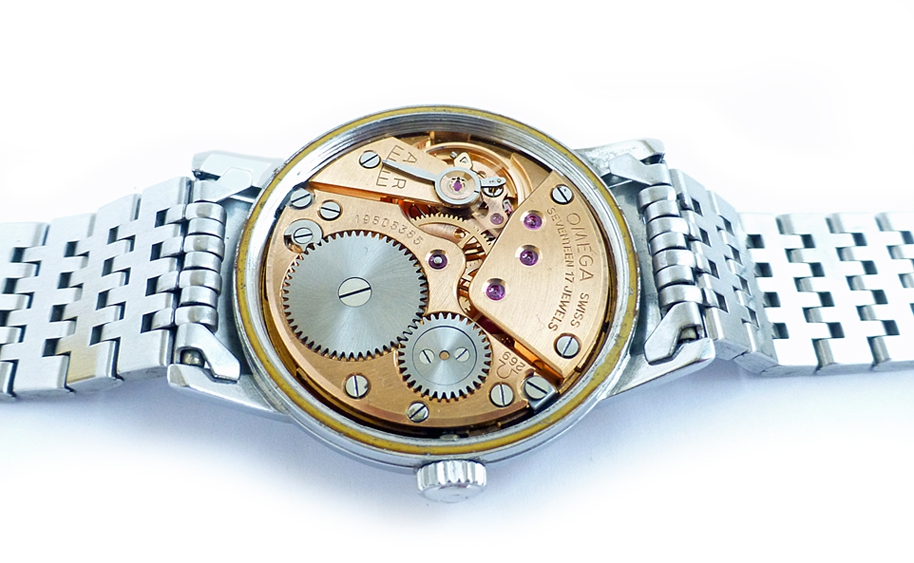Omega Omega Seamaster 30 Hand Winding NWW 1935
Omega Seamaster 30 Hand Winding
Omega Seamaster 30 wristwatch with manual winding with Omega calibre 269 movement dating to the 1960’s. It comes on an original Omega bracelet with signed folding clasp, it is unknown whether it was ion the watch when originally purchased, but its an original Omega bracelet and fits it well with snug fitting end links between the lugs. It has a very attractive silver dial with god hands and index markers. It also has a large Omega logo. It has a minimalist and sparse dial design providing a clean cut and subtle appearance, with minimally marked dial. It is working very well and keeping good time. Has a classically designed Omega case, signed crown and signed screw on case back, acrylic crystal and subsidiary seconds hand at the 6 position. Nice honest example of a vintage Omega with a great deal of character and appeal. Dimensions are 33 mm excluding crown, 35 mm including crown and 39 mm lug to lug and 9 mm thick.
Key Characteristics
Additional Product Details
Omega Watches. Founded at La Chaux-de-Fonds, Switzerland in 1848 by 23-year-old Louis Brandt who assembled key-wound precision pocket watches from parts supplied by local craftsmen. He travelled throughout Europe selling his watches from Italy to Scandinavia by way of England, his chief market. After Louis Brandt's death in 1879, his two sons Louis-Paul and Cesar, troubled by irregular deliveries of questionable quality, abandoned the unsatisfactory assembly workshop system in favour of in-house manufacturing and total production control. Due to the greater supply of manpower, communications and energy in Bienne, the enterprise moved into a small factory in January 1880, then bought the entire building in December. Two years later the company moved into a converted spinning-factory in the Gurzelen district of Bienne, where headquarters are still situated today. Their first series-produced calibres, Labrador and Gurzelen, as well as, the famous Omega calibre of 1894, would ensure the brand's marketing success. Louis-Paul and Cesar Brandt both died in 1903, leaving one of Switzerland's largest watch companies - with 240,000 watches produced annually and employing 800 people - in the hands of four young people, the oldest of whom, Paul-Emile Brandt, was not yet 24. Considered to be the great architect and builder of OMEGA, Paul-Emile's influence would be felt over the next half-century. The economic difficulties brought on by the First World War would lead him to work actively from 1925 toward the union of OMEGA and Tissot, then to their merger in 1930 within the group SSIH, Geneva. Under his leadership, then that of Joseph Reiser beginning in 1955, the SSIH Group continued to grow and multiply, absorbing or creating some fifty companies. By the seventies, SSIH had become Switzerland's number one producer of finished watches and number three in the world. Weakened by the severe monetary crisis and recession of 1975 to 1980, SSIH was bailed out by the banks in 1981. Switzerland's other watchmaking giant ASUAG, principal producer of movement blanks and owner of the Longines, Rado and Swatch brands, was saved in similar fashion one year later. After drastic financial cleansing and a restructuring of the two groups' R&D and production operations at the ETA complex in Granges, the two giants merged in 1983 to form the Holding ASUAG-SSIH. In 1985 the holding company was taken over by a group of private investors under the strategy and leadership of Nicolas Hayek. Immediately renamed SMH, Société suisse de Microélectronique et d'Horlogerie, the new group achieved rapid growth and success to become today's top watch producer in the world. Named Swatch Group in 1998, it now includes Blancpain and Breguet. Dynamic and flourishing, OMEGA remains one of its most prestigious flagship brands

